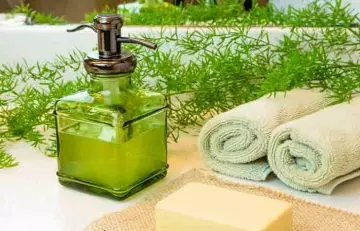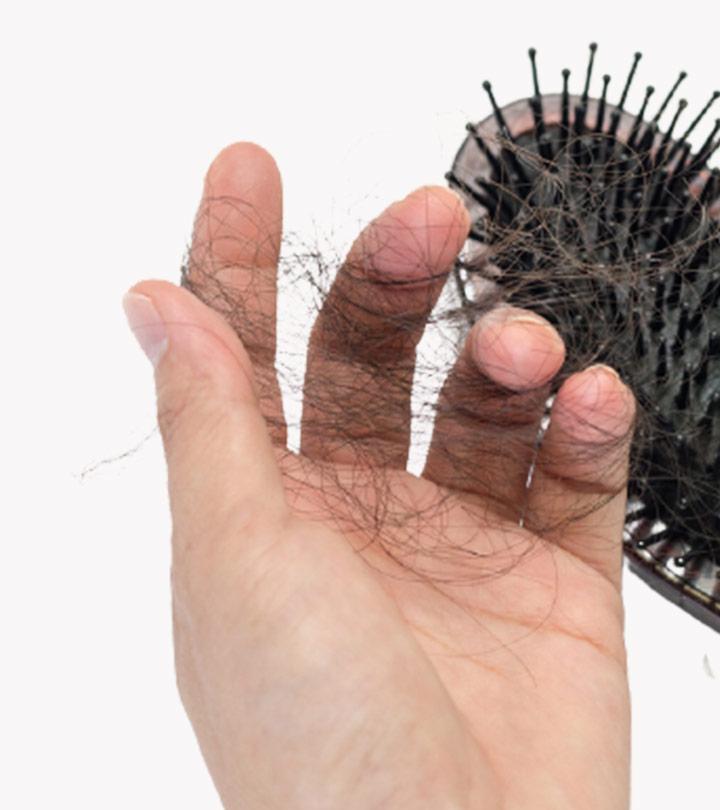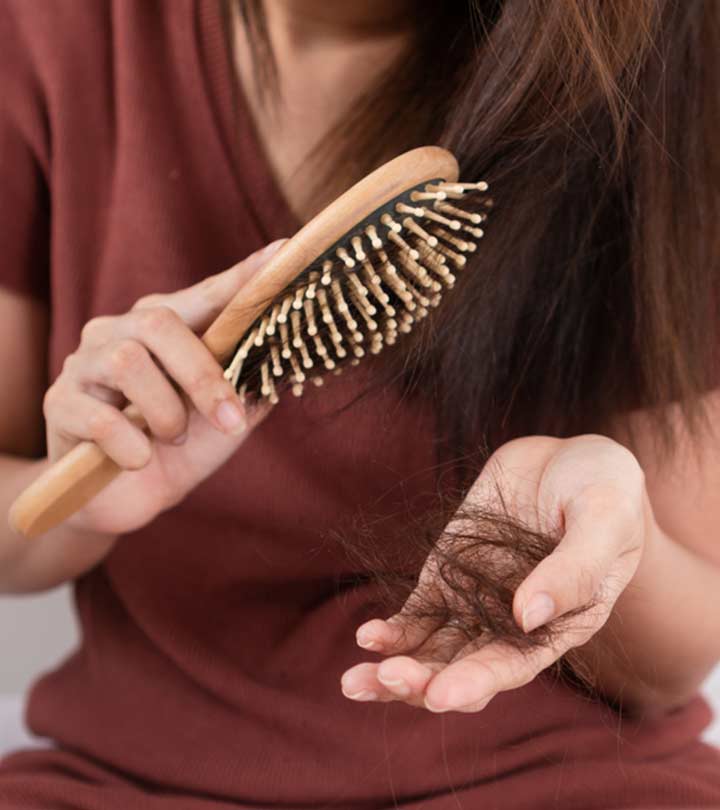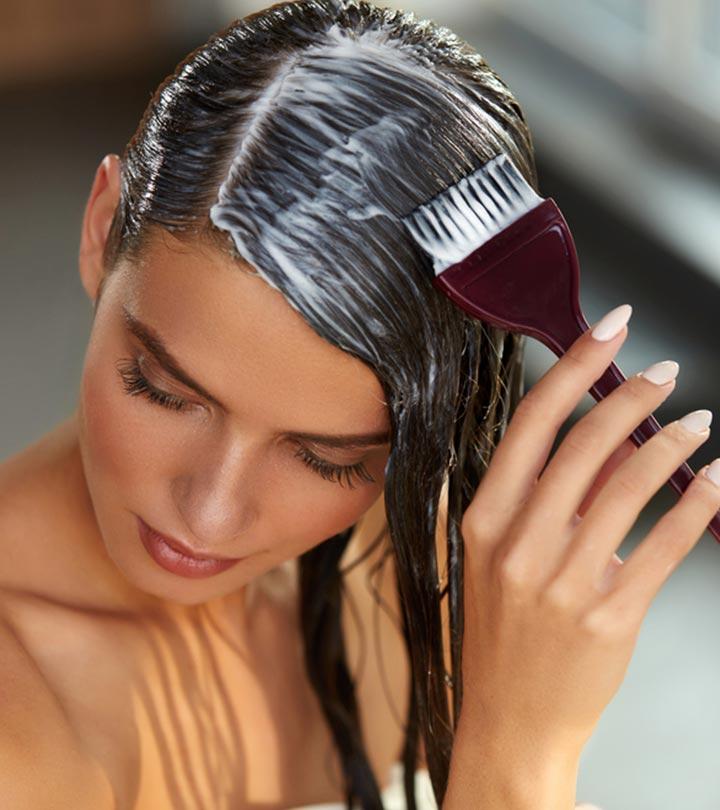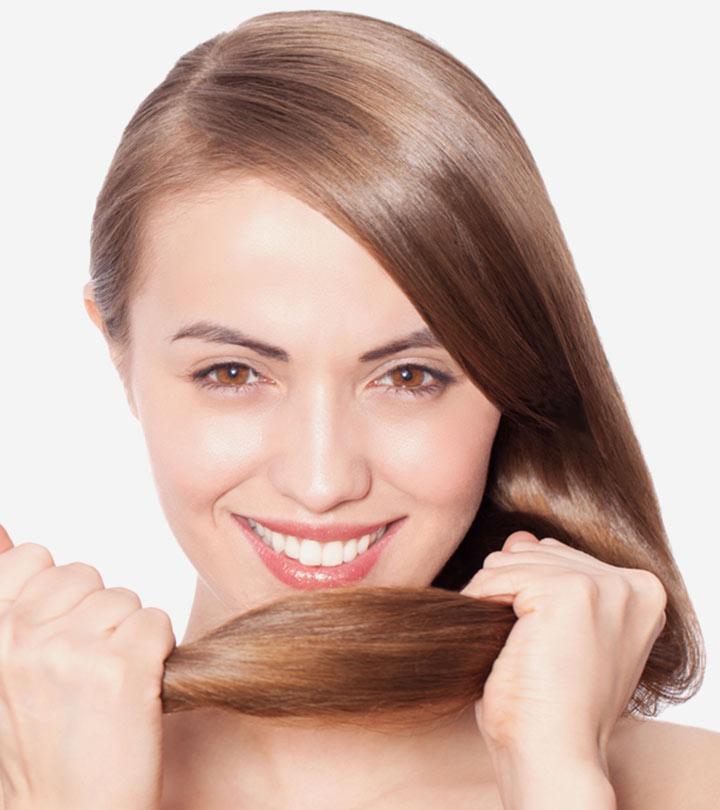How To Wash Your Hair With Castile Soap
The tips and tricks to reap all the benefits of this gentle soap for your hair.

Image: Shutterstock
If you are looking for a natural alternative to your regular shampoo, you may try castile soap for hair. It is a plant-based soap used in DIY soap-making and shampoo recipes. It is best for those with sensitive scalp and those who cannot tolerate regular shampoos. However, switching from shampoo to castile soap may take time as it is more alkaline than shampoo and can disrupt the scalp’s pH. You may need time to get used to this shampoo alternative. Keep reading to understand how castile soap works for hair and the right way to use this organic soap.
 Know Your Ingredient: Castile Soap
Know Your Ingredient: Castile SoapWhat Is It?
A non-irritating, natural, vegetable oil-based cleansing soap.
What Are Its Benefits?
It helps soothe scalp issues like eczema and preserves the natural oils of the scalp to boost scalp and hair health.
Who Can Use It?
Since castile soap is gentle on the scalp, it is suitable for people with an itchy, irritated, and dry scalp.
How Often?
You can use it 2-3 times a week, depending on your scalp condition and hair type.
Caution
Avoid using this alkaline soap on color-treated hair, as it can strip your hair of its color.
In This Article
What Is Castile Soap?
Castile soap is a multipurpose natural soap made from plants, nuts, and vegetable-derived oils. It originated in Castile, Spain, and was traditionally made using olive oil.
Castile soap contains lye (a metal hydroxide obtained from wood ash) and produces soap molecules. When you mix castile soap with water, it makes charged atoms that help dislodge dirt, grime, and grease. There are many benefits of switching from commercial shampoos to sulfate-free, natural castile soap.
 Did You Know?
Did You Know?The Benefits Of Using Castile Soap For Hair
1. It Is Gentle
Castile soap is natural and has fewer ingredients in it. This oil-based, non-toxic soap cleanses gently and is extremely good for sensitive scalp. Castile soap is good for anyone with scalp issues (like eczema and dermatitisi XA general term used to refer to skin conditions involving irritation and inflammation caused by contact with a substance. ) or those looking for a non-drying cleanser for hair.
2. It Is Non-Irritating
Like commercial shampoos, castile soap does not contain fragrances, harsh detergents, and chemicals that might irritate the skin. Moreover, it preserves the natural oils of the scalp and helps maintain a healthy scalp. This may also help keep the hair follicles healthy and promote a healthy hair growth rate.
If you are looking for a non-irritating and gentle cleanser that will not damage and dry out your hair, you can use castile soap. However, dilute it before using. Here is how you can use castile soap instead of shampoo for gentle cleansing.
Jilian Busby, a Youtuber, talks about her experience using castile soap for washing hair. She noticed that her hair felt good, neither too dry nor too oily. Her locks were balanced and smooth. She adds, “My hair feels a little frizzier than i thought it was going to be, honestly, it doesn’t feel dry or oily so it’s kind of like mint (i).”
How To Wash Your Hair With Castile Soap
1. Dilute The Soap
Castile soap is alkaline and can affect your scalp pH. Hence, use a tiny amount of the soap and dilute it with purified water. To start, mix a tablespoon of grated castile soap with 4 cups of purified water (each cup 100 ml). Shake the mixture until the soap is melted. You can adjust the ratio as per your hair needs. However, do not use too much castile soap.
2. Use A Post-Wash Acidic Rinse
Castile soap is alkaline and should be followed with an acidic rinse to restore scalp pH. You can use diluted lemon juice or apple cider vinegar rinse. Dilute ¼ cup of lemon juice or 4 tablespoons of ACV with 2 cups of water (100 ml each). Use this mixture as a post-wash rinse to wash your scalp and hair. Wait for a few minutes and rinse your hair with water.
3. Moisturize With An Oil
There is no need to use a conditioner. Instead, use any vegetable oil to lock in the moisture. You may use coconut, avocado, jojoba, argan, sweet almond, or apricot oil.
You can also mix castile soap with other ingredients to customize the natural shampoo. In the next section, we have shared a few vegan and cruelty-free recipes you may try.
DIY Castile Soap Recipes For Healthy Hair
1. Lavender And Almond Oil Castile Soap Shampoo
Almond oil has emollienti XAny substance with a moisturizing property that helps smoothen the skin and keep it soft by forming a protective film on the skin. properties (1). Hence, it may help keep the scalp and hair moisturized. Lavender essential oil is used in aromatherapy to reduce stress and anxiety (2).
You Will Need
- A bar of castile soap (melt and pour base)
- 20-30 drops of lavender essential oil (for fragrance)
- ½ teaspoon of sweet almond oil
- 2 cups of purified water (100 ml each)
Method
- Heat the castile soap in a double boiler until it melts. Let it cool down.
- Mix four tablespoons of the liquid castile soap with the water.
- Add the oils to the solution and mix.
- Pour the soap into a bottle and use it instead of a shampoo.
 Quick Tip
Quick Tip2. Peppermint And Tea Tree Castile Shampoo
Peppermint oil promotes hair growth without irritating the scalp (3). It also adds a refreshing minty fragrance to the shampoo. Tea tree oil has antiseptic and antimicrobial properties (4). These can keep the scalp healthy.
You Will Need
- 4 tablespoons of liquid castile soap
- 10-20 drops of peppermint oil
- 10-20 drops of tea tree essential oil
- 200 ml of purified water
Method
- Dilute the castile soap with water and mix the oils.
- Transfer the solution to a bottle.
- Wash your hair with the solution.
3. Clove Oil And Castile Soap Anti-Dandruff Shampoo
Research states that clove oil is effective against Malasseziai XA genus of fungi naturally found on the skin of warm-blooded animals. It appears as itchy bumps on the skin in its nascent stage. and can help manage dandruff (5).
You Will Need
- 4 tablespoons of liquid castile soap
- 20-30 drops of clove oil
- 200 ml of purified water
Method
- Dilute the castile soap with water.
- Add the oil and mix.
- Store it in a bottle and use it for washing your hair.
4. Chamomile And Castile Soap Shampoo
Chamomile is claimed to help in the treatment of hair lice and dandruff. Moreover, it provides relief to an inflamed scalp, moisturizing it and alleviating discomfort and itchiness (6).
You Will Need
- 2 chamomile tea bags
- 1/4 cup of liquid castile soap
- 1/2 teaspoon of olive oil (optional)
- A few drops of lavender or rosemary essential oil (optional)
- 120 ml of boiling water
Method
- Steep the chamomile tea bags in the boiling water and let it cool to room temperature.
- Remove the tea bags and pour the chamomile tea into an empty shampoo bottle.
- Add the liquid castile soap, olive oil, and a few drops of your chosen essential oil.
- Close the bottle and shake well to mix all the ingredients.
- Dampen your hair and apply the chamomile and castile soap shampoo.
- Lather it up, then rinse it off thoroughly.
Transitioning to natural castile soap from commercial shampoos is not easy. All hair types react differently. Initially, your hair may feel weighed down, and you may not get that squeaky clean feeling. However, this is temporary, and your hair needs time to adjust to the new routine.
Here are a few more pointers to keep in mind before you start using castile soap.
Things To Know Before Using Castile Soap
- Do Not Use On Colored Hair: Castile soap is an alkaline product and will strip your hair of its color.
- Do Not Combine Castile Soap With ACV And Lemon: Apple cider vinegar and lemon juice are acidic, while castile soap is alkaline. Acids and alkalisi XA base that produces hydroxide ions when it comes in contact with water and combines with acids to form salts. neutralize each other. This is not hazardous but will leave residue and an oily film on the hair. Instead, rinse with diluted lemon juice or ACV after cleansing your hair with castile soap.
Infographic: A Step-By-Step Guide To Using Castile Soap To Wash Your Hair
If you have a dry, itchy, or irritated scalp, using shampoos formulated with harsh chemicals can make matters worse. They strip out the moisture from the scalp, causing hair fall. So, what’s the way out? Try incorporating a natural cleanser such as castile soap, made of earth-friendly ingredients, to rinse your hair. Check out the infographic below to learn how to wash your hair effectively with eco-friendly castile soap. Illustration: StyleCraze Design Team
In a gist, castile soap is a plant-based, chemical-free alternative soap. You can use castile soap for washing your hair as it is gentle on the hair and scalp. It can be used on a sensitive scalp with issues like dermatitis and eczemai XA common and chronic skin condition that causes dryness, irritation, inflammation, and red rashes on the skin. . This handmade soap does not contain any harsh ingredients, such as artificial fragrances or detergents. You can use this natural soap as a post-wash rinse or a moisturizer paired with oil. You can scroll up and check out the many DIY hair care recipes to apply to your hair. These cruelty-free recipes pair castile soap with hair-benefiting ingredients like peppermint. Use these remedies regularly to see notable results.
Frequently Asked Questions
Does castile soap make hair greasy?
Since castile soap is alkaline, it may disrupt the pH level of your scalp, making it feel greasy.
Is castile soap good for natural black hair?
Yes, castile soap is excellent and safe for natural black hair. Just make sure to use it the right way.
Is liquid or bar castile soap better?
It depends on the type of usage and personal preference. A bar is concentrated and is best suited for washing your face and body, while liquid castile soap is generally used for washing hands, dishes, and cleaning.
Does castile soap remove the odor?
It is a gentle cleansing agent that may help remove malodor. However, strong or persistent odors may require a stronger cleaning solution.
Is castile soap antibacterial for the skin?
There is a lack of scientific evidence to suggest that castile soap has antibacterial properties.
Key Takeaways
- Castille soaps originated in Castille, Spain.
- They are made from plant-based ingredients that are beneficial for scalp issues such as eczema and maintain the natural oils in your hair.
- You should take proper care to maintain hydration and pH balance of the hair and scalp while using Castile soaps.
- You can try the peppermint Castille shampoo recipe at home to boost your hair health.
- Castille soap should not be used on colored hair as it may strip your hair of its color.
Discover the potential of using castile soap as an effective dandruff treatment. Check out this informative video to learn about its benefits and how to incorporate it into your hair care routine.
Personal Experience: Source
StyleCraze's articles are interwoven with authentic personal narratives that provide depth and resonance to our content. Below are the sources of the personal accounts referenced in this article.
i. I washed my hair with castile soaphttps://www.youtube.com/watch?v=oLn1vuqBR7E
References
Articles on StyleCraze are backed by verified information from peer-reviewed and academic research papers, reputed organizations, research institutions, and medical associations to ensure accuracy and relevance. Read our editorial policy to learn more.
- Anti-Inflammatory and Skin Barrier Repair Effects of Topical Application of Some Plant Oils,
https://www.ncbi.nlm.nih.gov/pmc/articles/PMC5796020/ - Lavender and the Nervous System,
https://www.ncbi.nlm.nih.gov/pmc/articles/PMC3612440/ - Peppermint Oil Promotes Hair Growth without Toxic Signs,
https://www.ncbi.nlm.nih.gov/pmc/articles/PMC4289931/ - Correlations of the components of tea tree oil with its antibacterial effects and skin irritation,
https://www.sciencedirect.com/science/article/pii/S1021949813000082 - Herbal vs. Chemical Actives as Antidandruff Ingredients -Which Are More Effective in the Management of Dandruff? An Overview,
https://opensiuc.lib.siu.edu/cgi/viewcontent.cgi?article=1647&context=ebl - Preparation of Strong Antidandruff Shampoo Using Medicinal Plant Extracts: A Clinical Trial and Chronic Dandruff Treatment
https://www.semanticscholar.org/paper/Preparation-of-Strong-Antidandruff-Shampoo-Using-A-Sahraie-Rad-Izadyari/6408866bb9b44345789aeaafc28c4e1e954cdcb8








